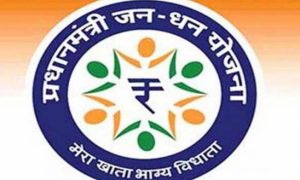Endometriosis is a disorder that can affect women’s entire lives, from their menstrual cycle to their digestion, mood, fertility, and ability to exercise. The painful condition occurs when, for unknown reasons, tissue from the uterus grows outside the uterine walls, often on the ovaries or around the bowels, causing inflammation and irritation in those areas. According to the ENDO study, endometriosis affects 11 percent of American women between the ages of 15 and 44.
Symptoms of Endometriosis
The most common symptom is pain, whether it’s in the form of cramps, intestinal pain, or painful urination, that flare up especially during menstruation. “Initial suspicion starts with period pain, that interrupts work or school, in most women or young women,” says Jeff Arrington, MD, FACOG, ACGE, an endometriosis excision surgeon at the Center for Endometriosis Care in Atlanta, Georgia.
”There are bowel conditions and back pain that can be symptomatic as well,” Dr. Arrington says. Often, it can take years to diagnose, because certain symptoms are either confused for other conditions or have been downplayed as “bad cramps.” Now, between celebrities and social media discussions about women’s health, there’s increased awareness of endometriosis.
Endometriosis Treatment Options
In terms of treatment, the only way to remove endometrial cell growth for good is through surgery, according to Dr. Arrington. (Many patients choose to have a hysterectomy as well.) But if that’s not a financial option for patients or they personally choose against it, there are other coping mechanisms.
”Many patients use NSAIDs, pain medications, various types of hormones, and heating pads; some patients will use mindfulness techniques, diet, acupuncture, and the like,” Dr. Arrington says.
How Adjusting Your Diet for Endometriosis Can Help
Lifestyle changes, starting with diet, may play a role in taming some of the inflammation that goes along with endometriosis flare-ups. Moving toward clean eating is common, Dr. Arrington says, and many of his patients try an anti-inflammatory diet, full of antioxidants and healthy fats, or a low estrogen diet (the hormone estrogen provokes endometriosis tissue to keep growing outside the uterus).
For Endometriosis patients, a shift in diet toward plant-based, low-inflammatory foods can help ameliorate the symptoms. For Jessica Murnane, author of the cookbook One Part Plant and host of the One Part Podcast, who also has endometriosis, making these dietary changes helped her feel healthier in multiple facets of her life, and changed her career as well.
”Endometriosis was the catalyst for a change in my diet, but for cooking as well—I wasn’t even cooking before. I was thinking about a hysterectomy or drugs to treat my endo. A friend suggested a plant-based diet, so I decided to try that as a last resort,” Murnane says.
Not only did she see a change in her symptoms once she made plants the focus of her meals, but she also noticed other health benefits. “The food is the starting point […] When I changed to an anti-inflammatory diet, I was in less pain, I had more energy to work out again, and I felt less sad. It started with food and led to all these lifestyle changes,” she adds.
Choosing the Best Food for Endometriosis
We spoke to experts to find out which ten foods may help the painful symptoms of endometriosis, and which ten to steer clear of in order to feel your best in our endometriosis diet guide.
For more updates: Like us on Facebook and follow us on Twitter & Instagram





































